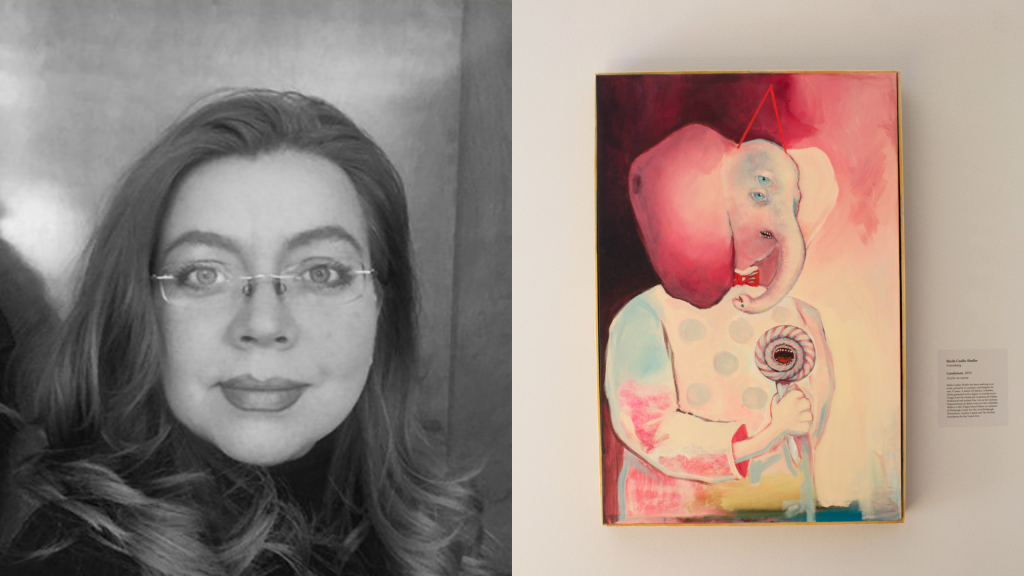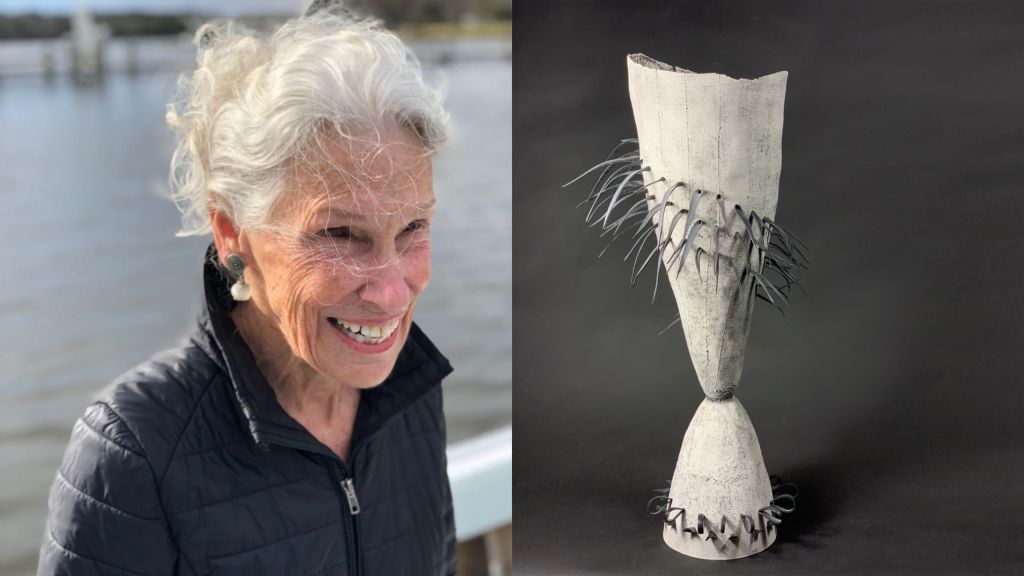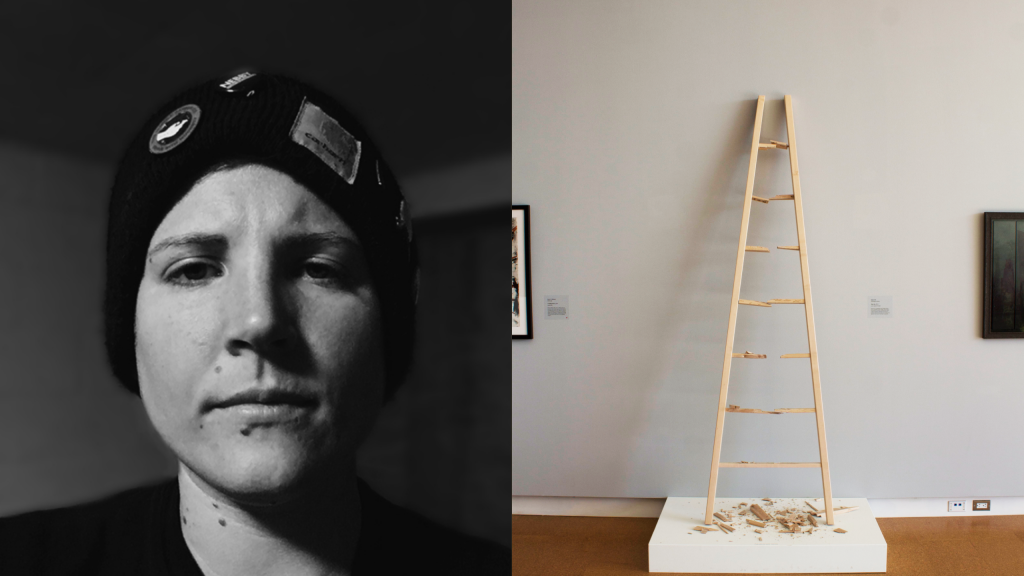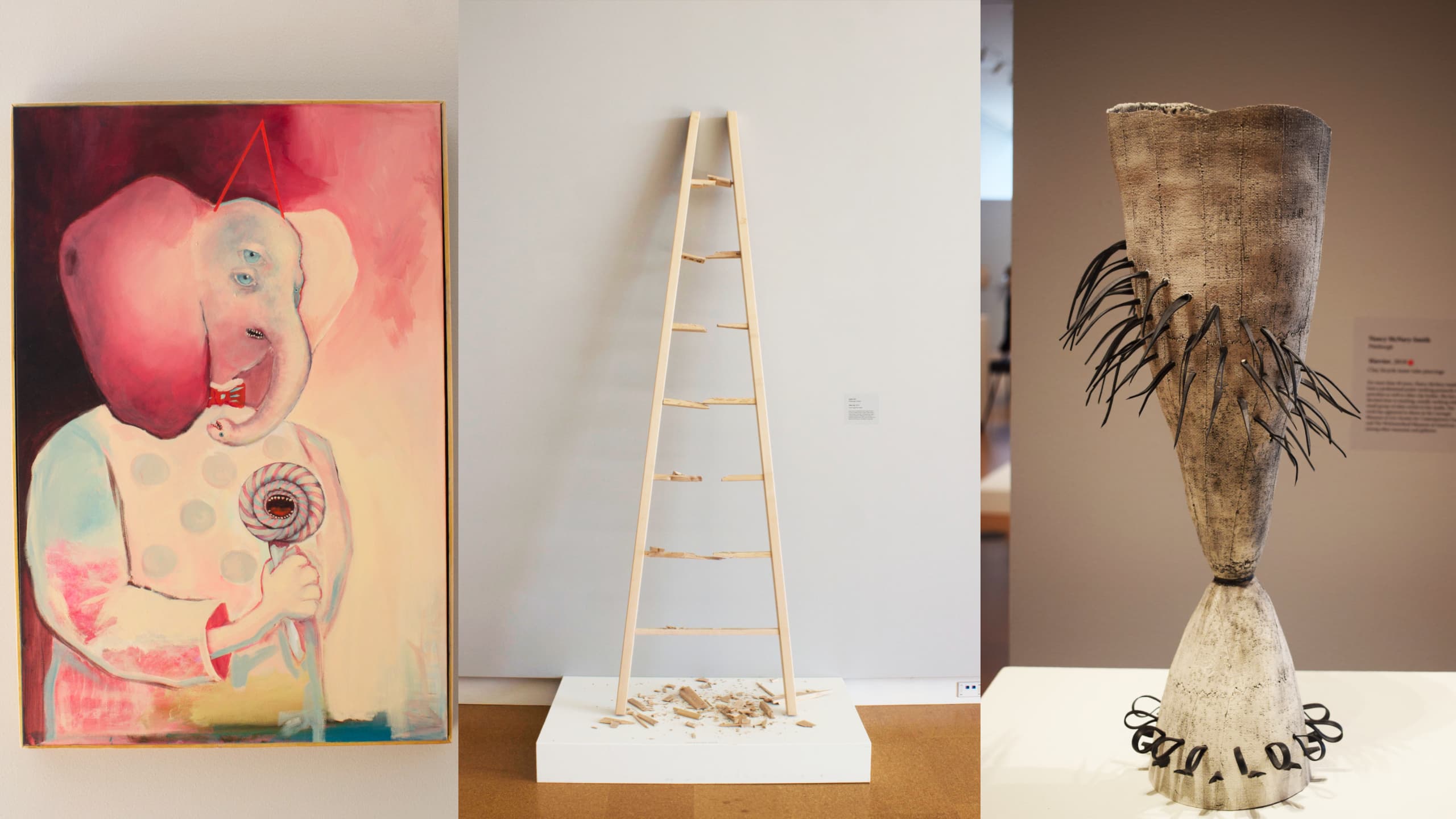Artists’ Answers: Sheila Cuellar-Shaffer, Nancy McNary-Smith, and Katie Ott
Wonder what inspired an artist or what they were thinking when they created a certain work of art? Us, too!
The 107th Associated Artists of Pittsburgh Annual features 53 works of art from some of the most talented working artists in the region, and we found Candyman by Shelia Cuellar-Shaffer, Warrior by Nancy McNary-Smith and Man Up by Katie Ott to be exceptionally intriguing. In order to sate our curiosity, we asked the artists a few questions.
Find out what inspired these works of art, how they know when an artwork is done, what artist tool they can’t live without, and what’s their favorite work of art. Hear more from these talented working artists at the Artist Talk, Jan. 16, 6-7pm.
Sheila Cuellar-Shaffer, Candyman

What inspired the piece, Candyman, that is in the AAP exhibit? My work is about power structures, the way they work, and how ideas are presented to the people. Candyman, is inspired by the layer that lives underneath that facade of images and words.
How do you know when an artwork is finished? Intuitively, I feel when it is time to stop. However, that stop is often not a final one. Many times I start a painting and there is a point when I have to kind of let the work be for a while, to allow myself time to look at it until I feel ready to get back to it. Many of my works never feel totally finished, but that’s ok. Once a painting is overworked, there is no going back.
What is your most important artist tool? Is there something you can’t live without in your studio? Right now it’s paint—antique gold and unbleached white paint. I love studying the subtle differences of color. I collect color swatches and paint samples and oftentimes find myself going to the hardware store to get more to spread out in my studio in search of new shades to use.
What’s your favorite work of art and why? Impossible to pick one work of art, although I can tell you a few favorites. I admire Colombian artists Olga de Amaral and Alejandro Obregón especially his work “The Dead Student,” and Peruvian artist Fernando de Szylszlo. However, if I have to choose it wouldn’t be a single work of art but Pre-Columbian art and artifacts. The way they represented the power of the natural world, their daily lives and how they used materials is fascinating.
Nancy McNary-Smith, Warrior

What inspired the piece, Warrior, that is in the AAP exhibit? “Warrior,” one of a series of pierced/punctured pieces, grew partly out of a feminist combination of outrage and defensiveness. But it also reflects my enjoyment of form and pattern. And I always love it when wit finds its way into, and out of, my works.
How do you know when an artwork is finished? Making art is making choices: do this; do not do that. Conceptual art (and mine is not that) is finished when its message is clear. My work—organic, intuitive—is finished when it satisfies me, when I’m comfortable, maybe even pleased, in its presence.
What is your most important artist tool? Is there something you can’t live without in your studio? Clay is transformed during firing—chemically changed—and gains whatever permanence it can lay claim to through terrifying heat. So, my kilns are the most foundational tool in my studio. My hands are the tools I depend on for creating.
What’s your favorite work of art and why?My response to art is like my approach to my own work—intuitive. But learning to see is a life-long undertaking, and one’s capacity to engage with art changes with time, knowledge, and circumstances. That said, some art arrests me, draws me in viscerally, demands my attention, satisfies my particular aesthetic. Other art—art that I ‘get’ at a glance; that has no mystery to feel, ponder, or plumb; or that is outside the scope of my aesthetic—does not engage me. And I know the subjectivity of my taste has the familiar ring of, “Don’t know anything about art, but I know what I like.”
Katie Ott, Man Up
What inspired the piece, Man Up, that is in the AAP exhibit? Through researching my MFA thesis on toxic masculinity and rape culture, I began to realize the damaging effects of masculine expectations were not limited to women. We live in a culture that socializes men and women in drastically different ways beginning before birth. Many young boys become aware of the social expectations of masculinity by age six. This sets the stage for a never-ending pursuit of an unattainable masculine ideal. Man Up is a visual representation of this enduring endeavor to prove manhood and how this struggle is set for failure by design. This wooden ladder leans against the wall, signifying the climb to the top of the masculine ideal. The bottom rung of the ladder remains intact, while every other rung is broken, the shattered pieces littering the surrounding floor. The first rung of the ladder is worn with footprints showing the ghosts of those who have tried in vain to reach the top. Other rungs are broken and engraved with the toxic idioms that have created an environment of failure and as such have been broken. The top of this ladder is unreachable by design, as is the construct of masculinity.
How do you know when an artwork is finished? All of my artworks begin as a variety of sketches. Once I have a final sketch that feels visually satisfying, I work with wood to realize that in three dimensions. Occasionally, these final products vary from the original sketch, but the moment where the physical three-dimensional form matches the final sketch is the moment of completion. Because of the subject matter of my work I often have a physical reaction when a piece feels complete. It is a lifting of an imaginary weight off my shoulders, in that I have made physical a mental exploration and commentary that can be released into the world.
What is your most important artist tool? Is there something you can’t live without in your studio? Fine woodworking is a medium of precision. I cannot live without my Starrett combination square. For a piece like “Man Up,” with the various angles and necessity on fine measurements, having an accurate measuring tool is paramount.
What’s your favorite work of art and why? Currently, my favorite work of art is “Nice Tits” by Sarah Lucas. Her work utilizes visual puns and bawdy humor to explore the gendered issues that exist because of tabloid culture. I have always appreciated her in-your-face way of expressing issues of power and gender, as well as her use of a variety of materials. “Nice Tits” in title and form are unapologetic and brutal in their honesty.
Captivated by these artists’ works and words? Want to ask them a few questions? Hear more from Shelia Cuellar-Shaffer, Nancy McNary-Smith, and Katie Ott directly at the upcoming Artist Talks, Jan. 16, 6-7pm, and engage in awesome conversation with them about their work and practices!
